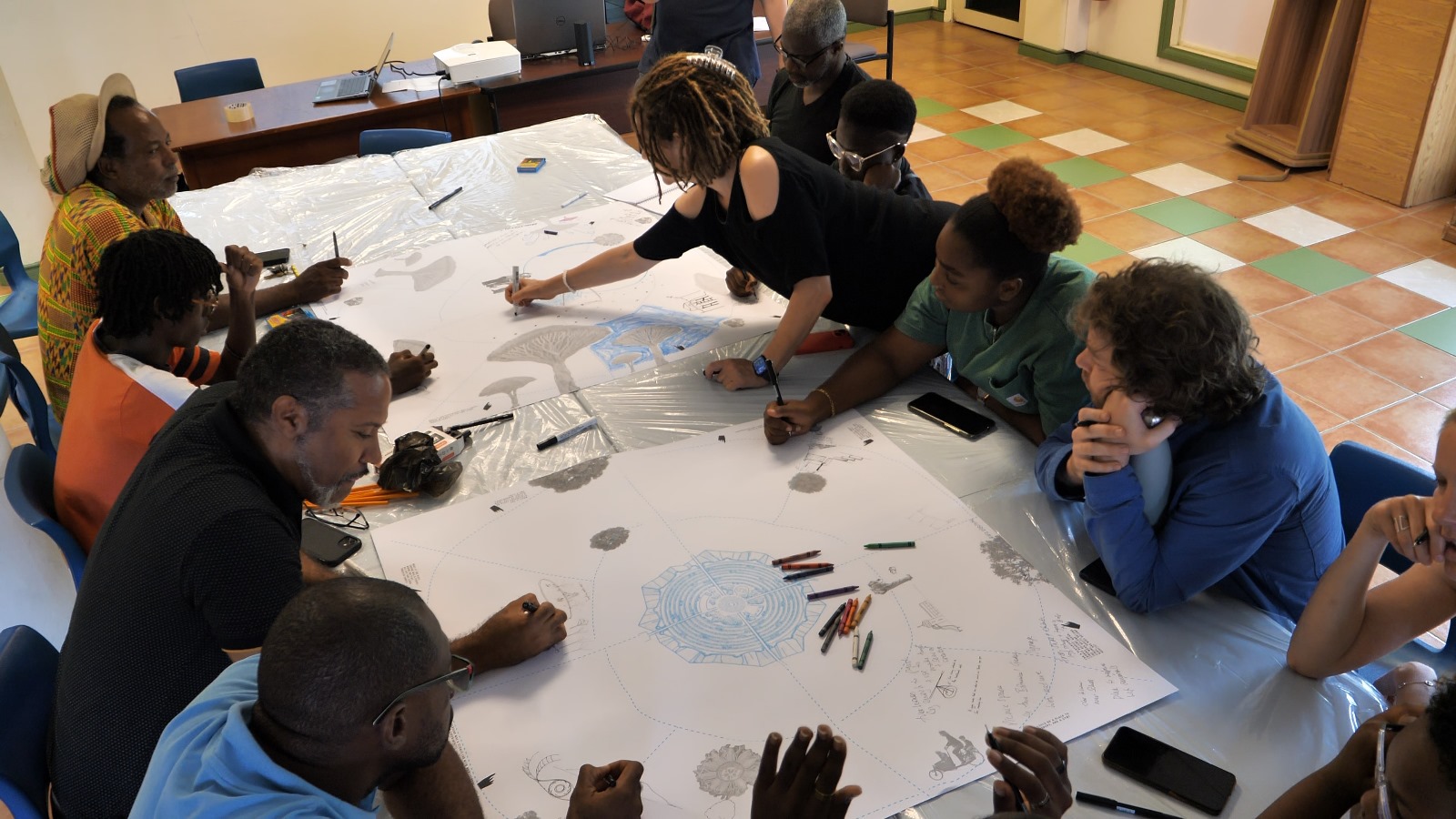
Wouldn’t a playground be the right place to start building a university?
One of the highlights of our discussion circles is two days of meetings with Saint Vincent communities to talk about the role of public spaces, play, and education—specifically playgrounds. Playgrounds are political spaces that reflect social changes and societal views on public welfare, education, and play.
First we had a workshop and lectures, live streaming tour about what a playground is and what kind of playgrounds could be on St Vincent. We held it at St Vincent and the Grenadines Community College with students and faculty.

We never knew for sure who would come to our workshops and were very worried (at least I was) that we might not be able to find common ground with the people on the island. The instructors had more than 20 people signed up for this workshop and so our co-organizers on the island told us to prepare a whole mountain of food (at student workshops participants are supposed to be fed). We came with pots, pans, and special napkins that I printed and brought from London but less than 10 people came to the workshop…
I was absolutely sure of the workshop structure itself because I had already used it in many countries: Iceland, Cuba, Germany, England, Russia, and Ukraine.
In addition, we had an awesome program:
- Jonna Warsza streamed for us from Berlin’s Gropius Bau Museum, during which she gave us a tour of the brilliant Radical Playgrounds exhibition.

- Andris Brinkmanis gave a lecture on the history of playgrounds and showed works by the Brazilian art collective Grupo Contrafilé, whom he has previously invited to his project Pedagogies of Care at the Museum of Care.
Many thanks to Vassily Pigounides and Lisa Wintersteiger for their endlessly caring facilitation and to Ronnie Daniel for the tireless organization of all our events.

As a result of all our efforts, and despite the initial anxiety, everything went well. Teenagers who initially treated us with suspicion or apathy found themselves engaged in a shared conversation with their teachers and us. I feel like this workshop was the most successful one yet. We accumulated so many ideas that we now have a big program for the future–the main project we will be preparing for our return to St Vincent in November is building a playground with the local community.
We will tell you more about this in the next newsletter and in the Museum of Care’s room dedicated to playgrounds.
Building a playground is symbolically very important to us. Playgrounds are political spaces that reflect social changes and our views on public welfare, education, and play. In order to build a university that is open to the community that is welcoming us, maybe building a playground that is open to both children and adults, open to all, would be the best first step.

Besides, educational institutions–with their lectures, grades, certificates, and ranking lists–simply demand the existence of playgrounds; where the rules are made up on the fly but can change at any moment; where anyone who is bored of playing can simply leave…. In other words, utopia must meet reality and try to find common ground.
We also attended a community meeting in Sandy Bay, a particularly vulnerable neighborhood in St Vincent. We wanted to build a playground there, but it turned out not to be the right proposal. We have revised it and, after further consultation, we will let you know in the next newsletter what we have planned.
At the end of November, we plan to return to the island again to discuss in detail the projects we would like to realize. We also plan to start construction on the playground.
